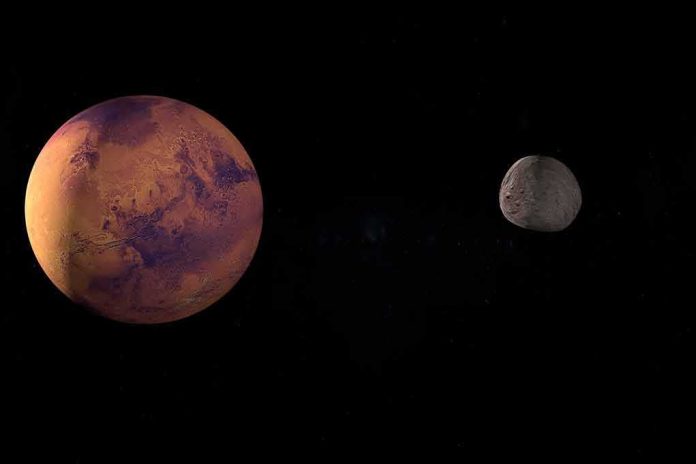
A Manhattan-sized interstellar comet 3I/ATLAS is sparking curiosity and speculation as it grows a significant tail, marking a milestone in space observations.
Story Snapshot
- 3I/ATLAS is the third confirmed interstellar object visiting our solar system.
- The comet has developed a Sun-facing dust plume and an anti-solar tail.
- Observations provide insights into interstellar comet behavior.
- Visibility from Earth is limited, but space-based assets may capture more data.
Interstellar Origins and Discovery
3I/ATLAS, discovered as part of the ATLAS survey, is a Manhattan-sized comet on a hyperbolic trajectory, confirming its interstellar origin. This makes it the third such object identified, following in the footsteps of ‘Oumuamua and 2I/Borisov. The comet’s unusual features, such as a Sun-facing plume and rapid tail growth, offer fresh insights into comet physics, distinct from those observed in solar system comets.
As the comet approaches its close encounter with the Sun, its activity has been intensively monitored. Observations from the Hubble Space Telescope and ground-based observatories have documented a sequence of dynamic changes, including the development of a tail that acts as a unique window into its physical processes. These findings are crucial for understanding the composition and behavior of matter from other star systems.
Current Observations and Limitations
As of September 2025, 3I/ATLAS has developed a tail approximately 100,000 kilometers in length. The comet’s position near the Sun limits its visibility from Earth, especially around its closest approach on October 29, 2025. However, Mars orbiters are strategically positioned to continue observations, potentially capturing data unavailable from Earth. This situation underscores the importance of international cooperation in space exploration.
While the comet is temporarily unobservable from Earth, the data collected thus far is invaluable. It provides a rare opportunity to study the behavior of an interstellar comet in real time, contributing to our understanding of planetary system formation and the distribution of organic materials across the galaxy.
Scientific and Cultural Implications
The observations of 3I/ATLAS have significant scientific implications, offering immediate insights into interstellar comet composition and behavior. These findings may refine existing models of planetary system formation and the interstellar medium. Technologically, the ability of current observatories to capture such dynamic events demonstrates their continuing relevance and capability.
On a cultural level, the comet reinforces public interest in astronomy and the search for life’s building blocks beyond our solar system. It highlights the value of sustained investment in astronomical infrastructure and international collaboration in space science. The excitement surrounding 3I/ATLAS serves as a reminder of the wonders of the universe and our ongoing quest to explore them.
Sources:
Comet 3I/ATLAS Blasts a Jet Towards the Sun in New Telescope Image – Space.com
Comet 3I/ATLAS Losing at Least Two Kangaroos Worth of Dust Every Second – IFLScience











